This is part 2 in our series about LN8W. In part 1 we talked about the history and creation of the contest station as well as our experience participating in the CQ WPX SSB contest from LN8W. In this post, we will take a closer look at the antenna park and equipment they have there, and our experience from the second-weekend visit, where we focused more on casual DXing as opposed to contesting.
For this visit, LB1DJ, LB6GH, Aleksander (now LB5DJ), and LB9WI joined for the first time, with LB5PI joining for his second weekend there. Since there was no contest this weekend, and we were the only group in attendance, we needed someone who had been there before and was familiar with the station. We arrived late Friday night, and after a quick homemade spaghetti bolognese for dinner, we made the short trip across the courtyard to check out the radio shack.
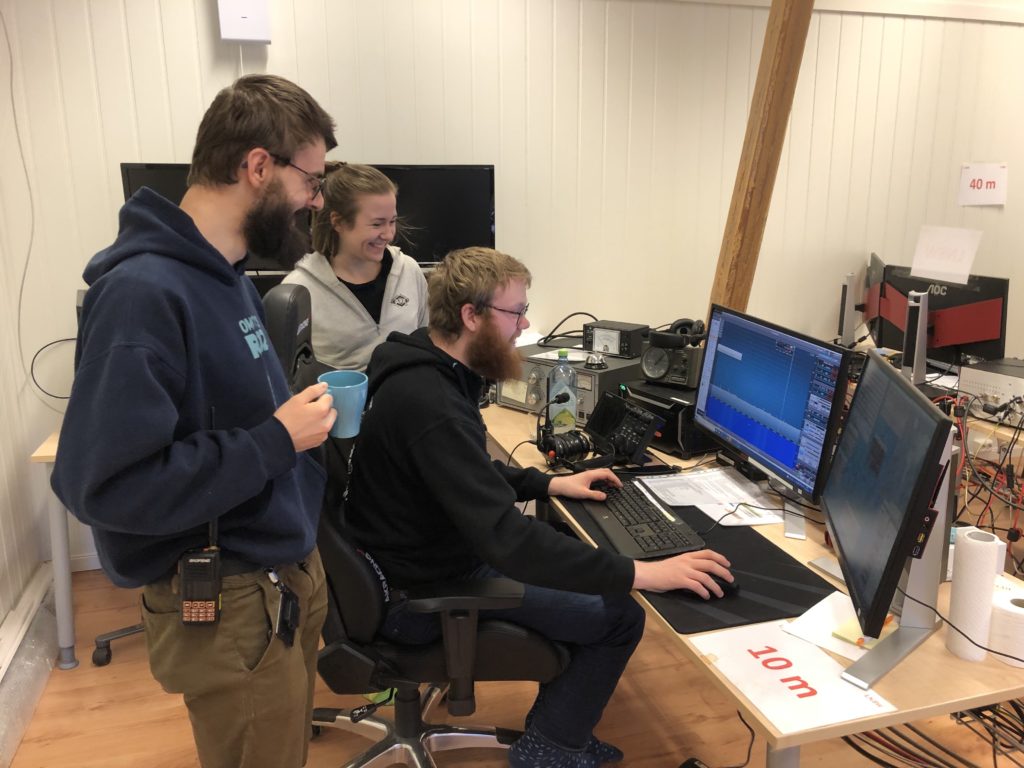
Photo: LB5PI
The LN8W contest station is equipped with lots of transceivers. By the original design, every transceiver or shack is dedicated to one band only. This is done to minimize antenna switches operating between the bands, which can eliminate interference between them, plus make it easier to manage the large number of antennas available for each band.
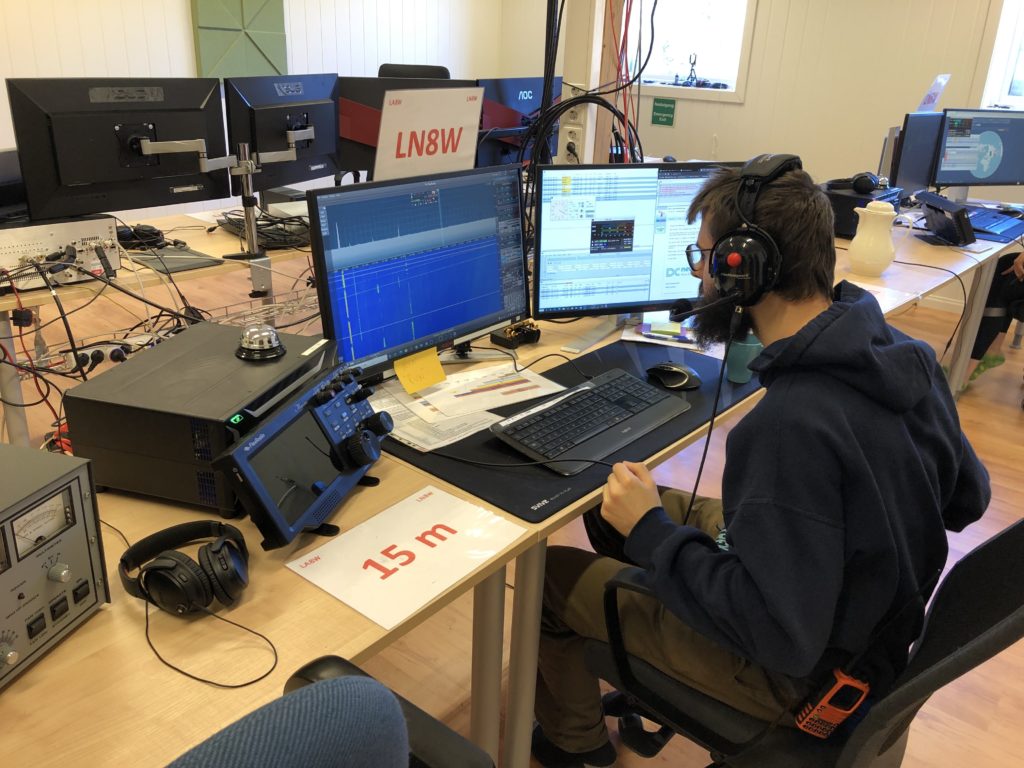
Photo: LB5PI
Each station sports a Flex Radio Flex-6660, an SDR radio with computer-based control. For the most part, a Windows application named SmartSDR is used to control the radio, though an accompanying tablet-like control interface called the Maestro was also available to control the radios. We have a similar setup with a Flex-6500 and Maestro in our shack, so getting accustomed to the setup was a breeze.
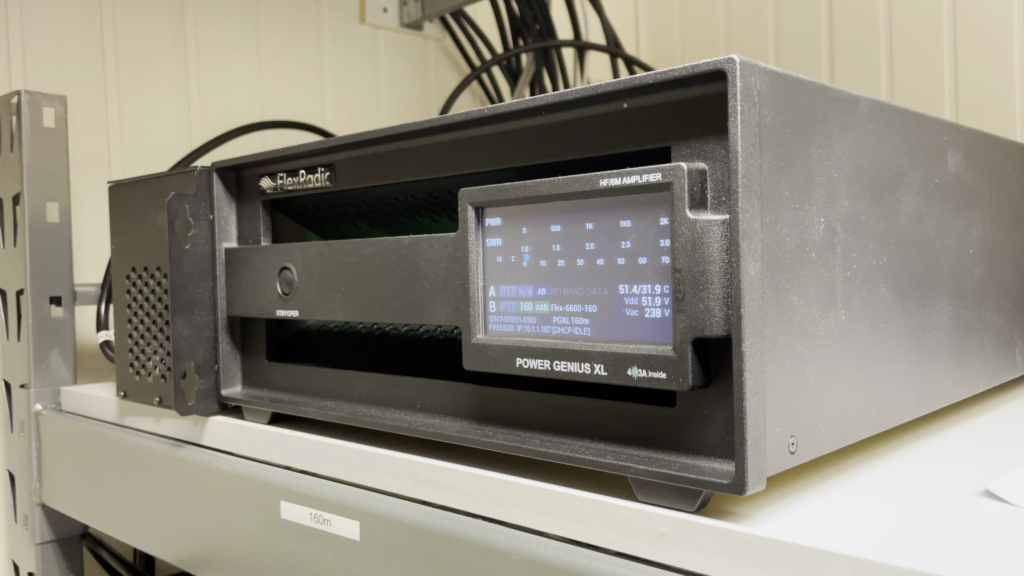
Photo: LB0VG
To achieve 1 kW out on the various bands, a series of Flex Radio Power Genius XL amplifiers, one for each band, are connected up and placed in a separate room. This is done to minimize the noise and heat produced by the amplifiers, as the amplifiers are easily controlled over the network. These are also transistor-based power amplifiers, which require little to no user interaction. Since the power amplifiers and transceivers are both made by Flex Radio, the PG XL fully integrates into the previously mentioned SmartSDR software.
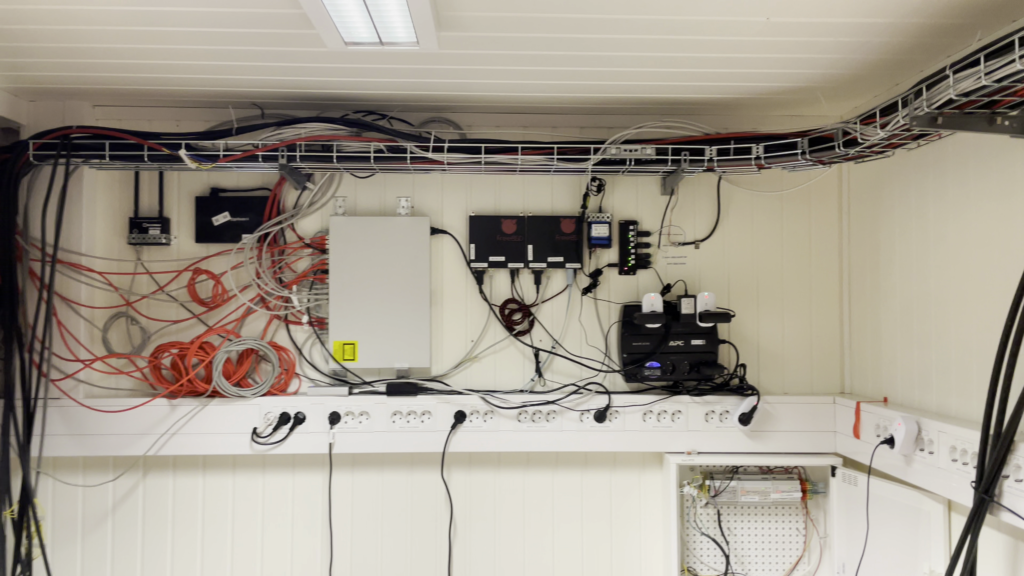
Photo: LB0VG
Because the Flex transceivers need to interface with both the Maestro control and the PG XL power amplifiers, the shack is very dependent on LAN control. The rotors and antenna switches are also connected up in the system, which in turn allows the user to change through the different possibilities remotely through a web interface.
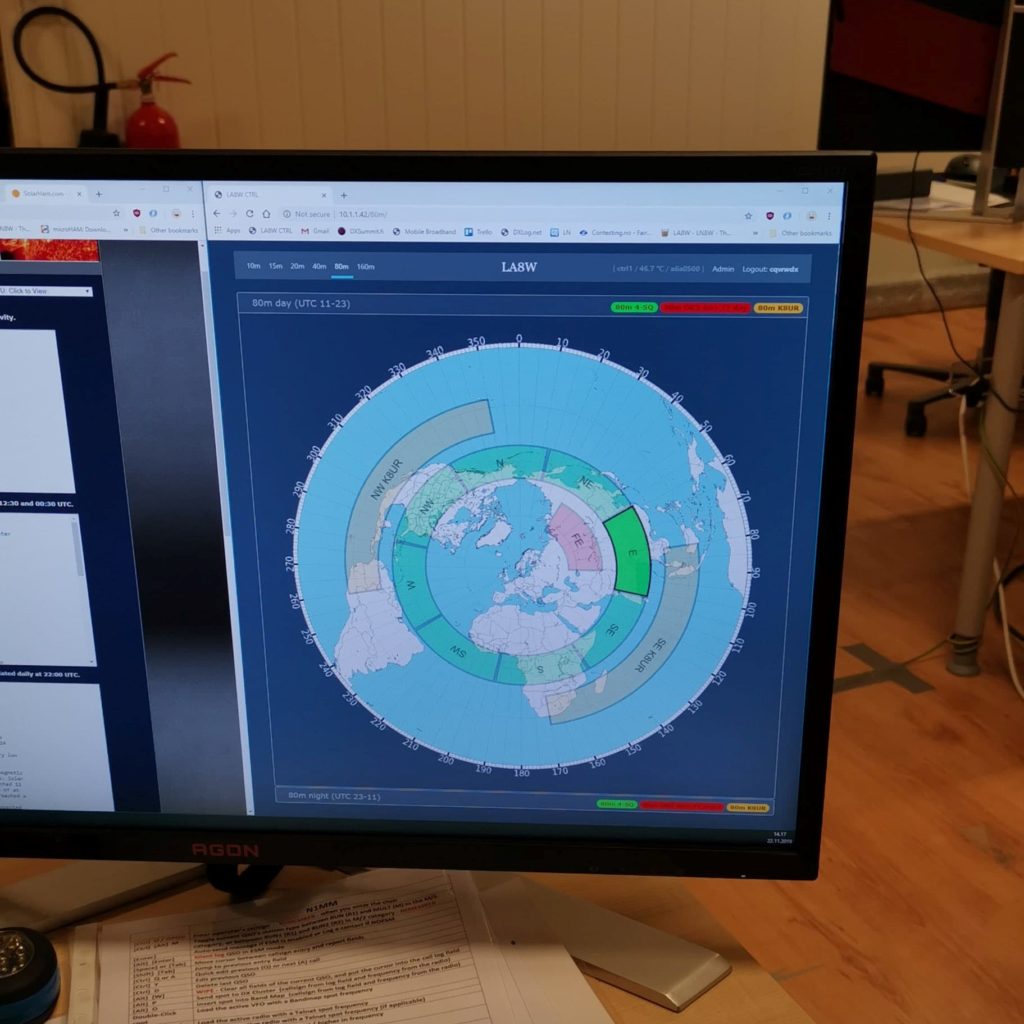
Photo: LA5KO
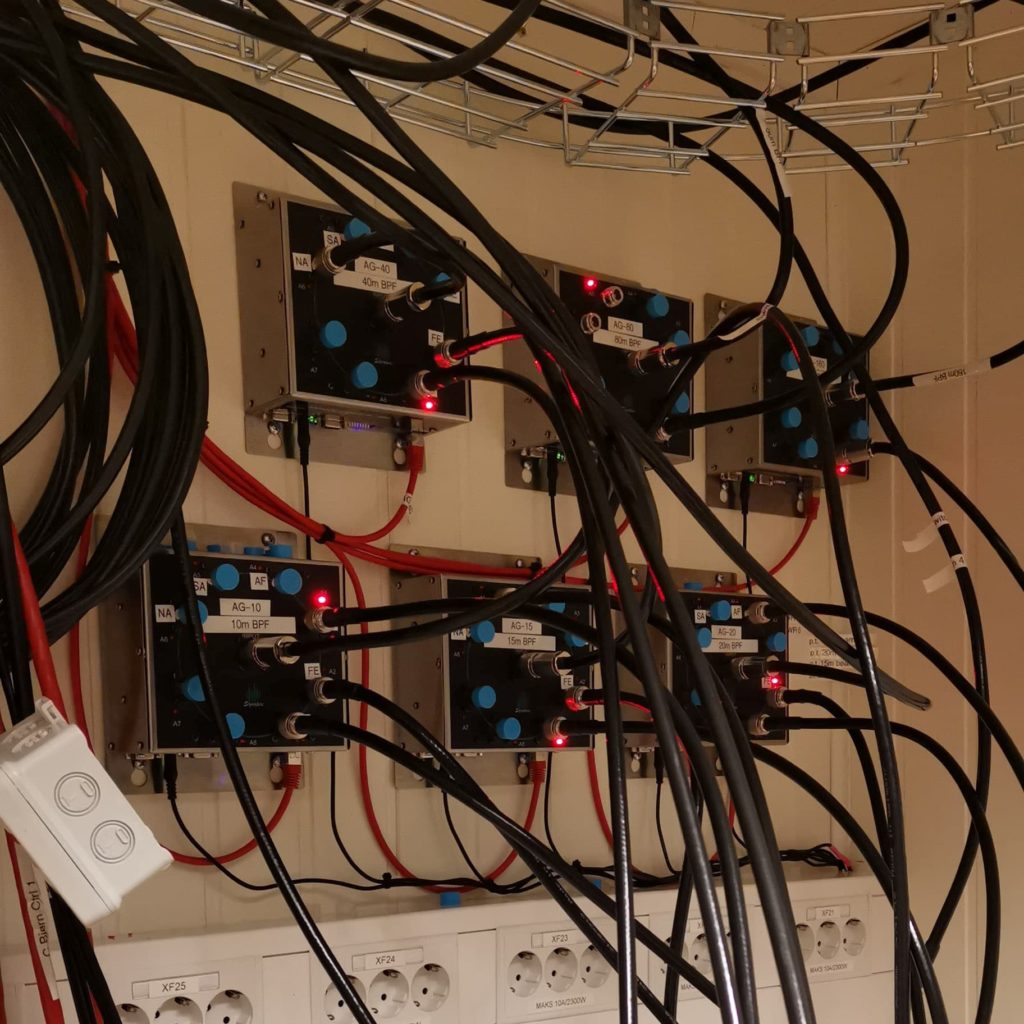
Photo: LA5KO
Tower-wise, LA8W is well covered. When entering the premises, you are immediately met with two gigantic 56m towers that are suitably dubbed the South and North towers.
The South tower is made up of two full-sized 4-element 40m yagi antennas (OB4-40OWA), plus a triple-stack of tri-bander antennas for the 10, 15, and 20m bands (OB21-3). The North tower has an impressive 80m beam (OB3-80+), another full-size 4-element 40m yagi (OB4-40OWA), and a similar triple-stack of tri-bander antennas for the 10, 15, and 20m bands (OB16-3)
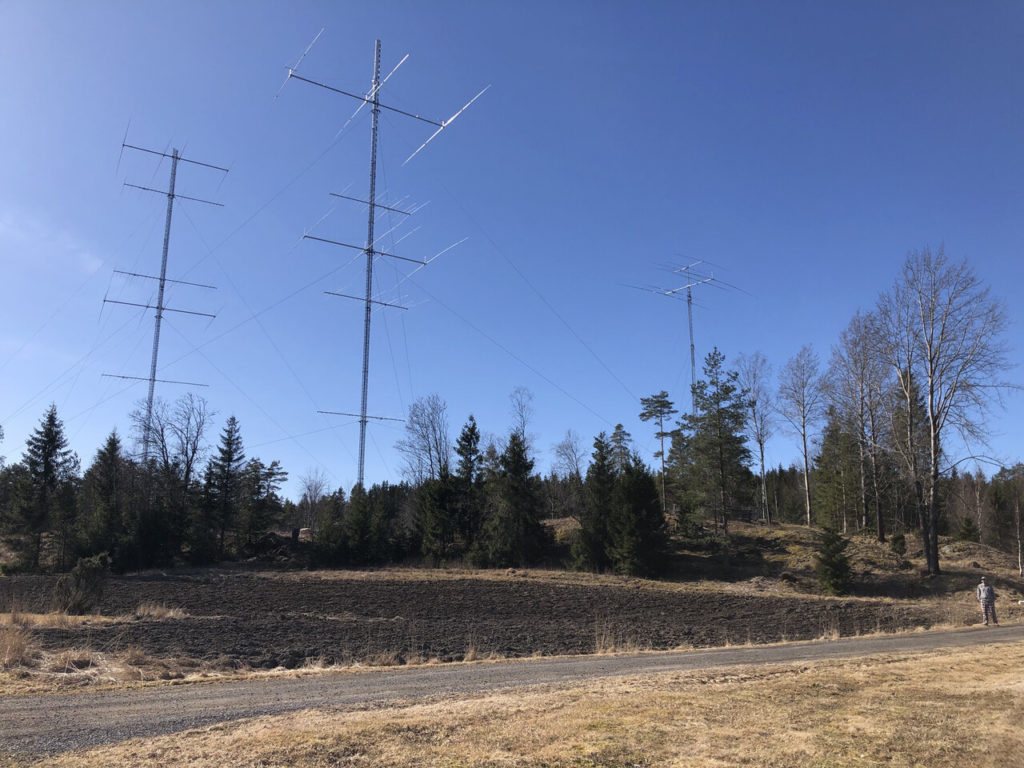
LB5PI in the lower right corner for scale
Photo: LB9WI
The last tower, pictured to the right, is a 24m versa-tower consisting of two beams – one 2+2-element duo-bander for 40/30m (OB4030) plus a 2 + 2-element duo-bander for the 17 and 12m bands (OB1712). This was planned mainly to run Europe on 40m, but also exists to work the WARC bands in general DX-ing outside of contests.
On the other side of the farm, there are two additional towers. The left tower contains a 5 element 10m beam (OB10-5) plus an unused 15m beam underneath, while the right tower has a single 5 element 20m beam (OB20-5).
Under the 20m tower pictured to the right, a beverage antenna based on the K1FZ reversible 9:1 balun is placed to act as a receive antenna. This antenna covers the 80m and 160m bands in the southwest and northeast directions.
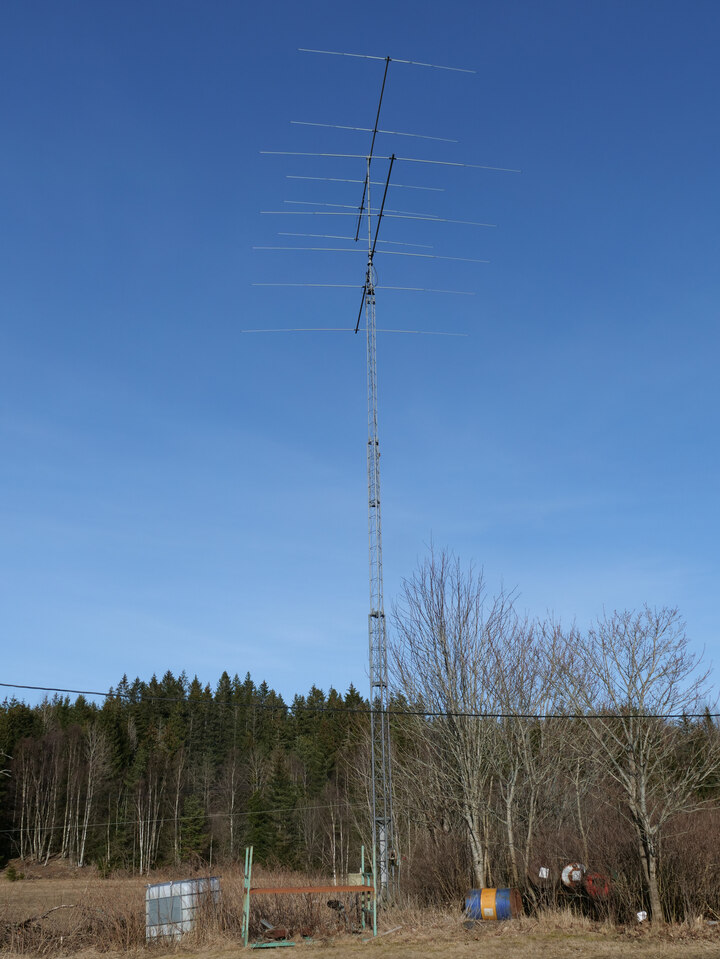
Photo: LB0VG
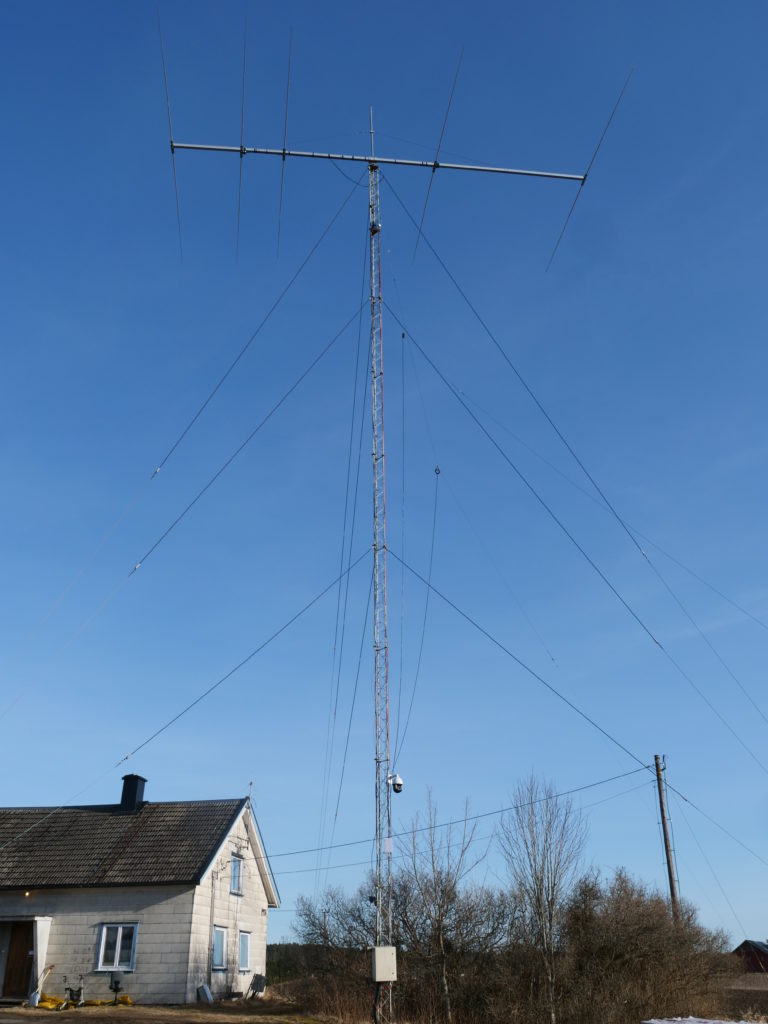
Photo: LB0VG
The last tower, not pictured, is in a field just by the entrance and is a single tower with a 5-element 15m beam (OB15-5). It also serves as the anchor point for the inverted-L antenna for the 160m band. On the same field, a similar beverage antenna is placed covering the remaining NW and SE directions for the same bands.
A very cool addition to the already good number of towers and antennas on the station are the 80m and 160m 4-square antennas placed in the forest behind the station. This type of antenna allows the operator to specify and change the working direction by combining different parts of the antenna setup. It also alleviates any noise that often occurs on the lower bands.
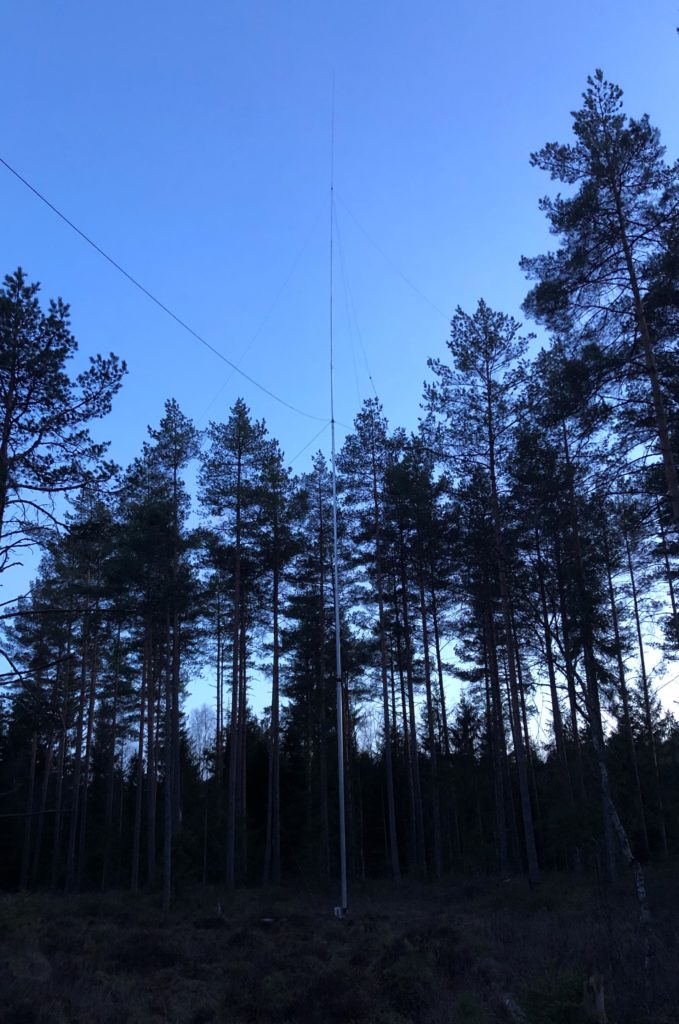
Photo: LB5PI
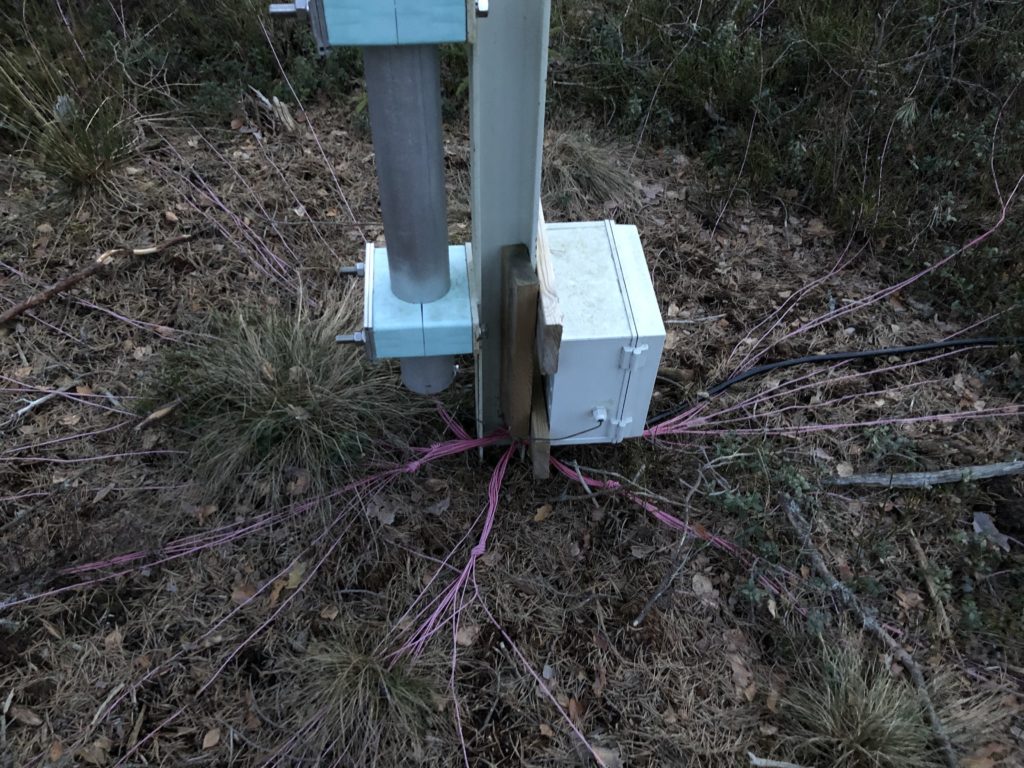
Picture: LB5PI
The 160m 4-square antenna boasts 4 top loaded verticals, with a whopping 64 radials per element. The 80m 4-square has full-size 1/4 masts at 20m length, also with 64 radials per element. Both antennas worked wonderfully on the bands, and being able to change the direction was a nice addition to the other antennas available.
All this equipment, combined with the remote location of the station, allowed for some pretty hefty DXing. Since there was no contest this weekend, our focus was mainly to use this to our advantage without any specific goal in mind. We did have expectations, such as QSOs with faraway countries, or just being able to hear QRP stations we don’t usually hear from our QTH in the middle of Trondheim.
In the image below is a world map of all the countries we were able to make contact with during the weekend visit.

Again, we want to thank LN8W for letting us visit and especially Roy Almedal / LA5KO for inviting us. Thanks from LB1DJ, LB5DJ, LB5PI, LB6GH, and LB9WI. We can’t wait for the next visit!


Leave a Reply